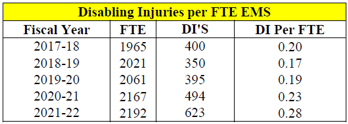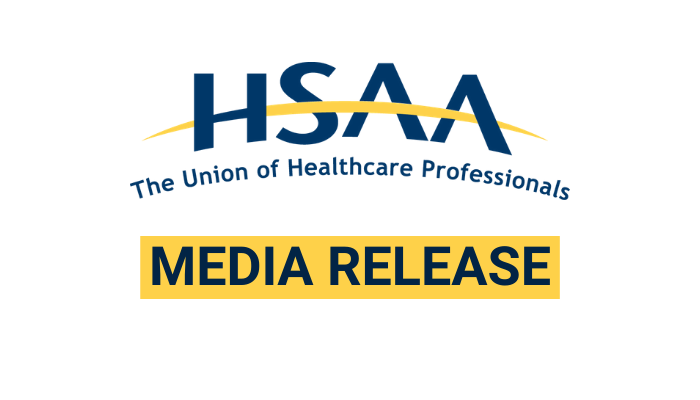The Health Sciences Association of Alberta (HSAA) is recommending comprehensive, forthcoming and transparent information be made available to Albertans.
EDMONTON– HSAA members are the experts in the delivery of Emergency Medical Services (EMS). They know too many Albertans in need of emergency care are still waiting too long for help to arrive.
“Last week, the government said the crisis is over and yesterday a new report showed how entrenched the crisis still is,” said HSAA President, Mike Parker. “We are still in a crisis and we can overcome it. But quick fixes and highlighting selective data won’t get us there.”
HSAA has been clear the solution to the crisis is to address working conditions that result in people being off sick, suffering injuries, and that deter prospective professionals from pursuing the career. Parker explains there are three performance measures that will tell us when the crisis is over. “For Albertans to believe the EMS crisis is over they need to know EMS is fully staffed, we are taking care of the people taking care of us, and that an ambulance will be there when they need one.”
HSAA is recommending:
- Response times be measured “call to door”
- Release daily numbers showing unfilled shifts and dropped ambulances
- Release proof working conditions are improving
“We should report the complete time it is taking for paramedics to respond,” added Parker. “17 minutes is not an improvement. Imagine doing CPR or being helpless to a loved one in pain for 17 minutes.”
“Albertans also need to know how dangerous these jobs are. It’s unacceptable that over 1 in 4 paramedics were injured on the job last year. Government must show its quick fixes are not at the expense of the health and safety of paramedics and emergency communications officers (ECOs).”
“If this government is going to announce new resources it needs to be honest about staffing. 19 new ambulances across the province with no new staff does little when Edmonton alone is averaging 17 dropped ambulances every day.”
HSAA, as always, is ready to work with any government to improve these performance measures.
Read first-person perspectives from Alberta EMS professionals in The Parkland Institute report, Lights and Sirens: The Critical State of EMS in Alberta.
– 30 –
Media Inquiries:
Kirk Heuser, HSAA Communications Officer
780-690-8199 | kirkh@hsaa.ca
ADDITIONAL INFORMATION
Dropped Trucks Nov 2022 – Feb 2023 (YEG Only)
A compilation of the numbers shows that from November 2022 to February 25, 2023, a scheduled ambulance was dropped from service in Edmonton 1891 times because there were not enough paramedics to staff them.
This period is 114 days, meaning Edmonton is short an average of seventeen ambulances (34 paramedics) every day.
AHS EMS WCB Injury Statistics (FTEs)
(Fiscal year 2017-2018 to 2021-2022)
SOURCE: FOIP Request 2022-G-204
The Disabling Injury (DI) rate per FTE has increased every year and sits at 0.28 in FY 2021-22. That means 28% of FTEs were off, on modified work arrangements, or both during the year.
An EMS professional has better than one in four chances of being injured at work during a year.

